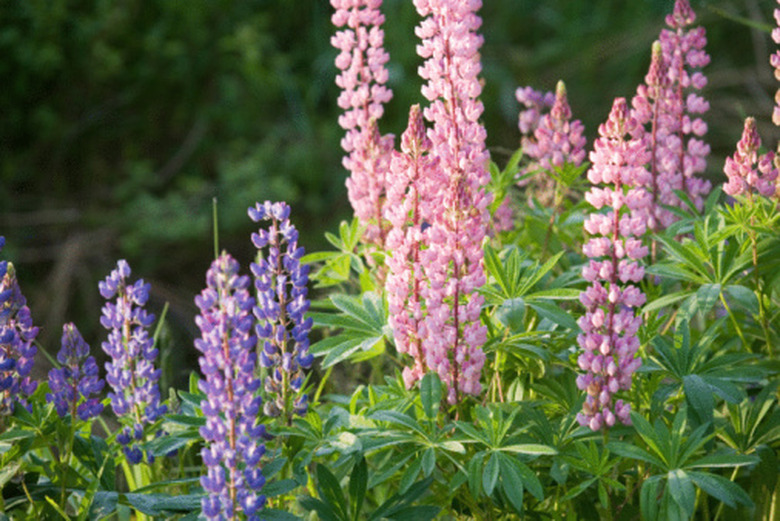Bugs On Lupine
Lupine is a flower grown in many yards and gardens. This plant is susceptible to damaging insect infestations. Aphids and blister beetles are the two most common pests of lupine. These insects can damage the health and appearance of lupine. Heavy insect infestations usually respond best to a combination of cultural control methods and chemical insecticidal products.
Identification
Aphids are tiny pests that are usually less than 1/8 of an inch in length at maturity. These insects have soft, oval-shaped bodies and are often a wide range of colors such as yellow, pink, brown, black, red or green. The aphid species that most commonly attacks lupine is the lupine aphid, which feeds on the plant with its piercing mouthparts. Blister beetles are another common lupine pest. Black or gray blister beetles measure from 3/8 to 1 inch in length and have long, narrow bodies. Blister beetles have chewing mouthparts that they use to feed on lupine, as well as alfalfa, soybeans and other garden plants.
- Lupine is a flower grown in many yards and gardens.
- Blister beetles have chewing mouthparts that they use to feed on lupine, as well as alfalfa, soybeans and other garden plants.
Effects
Lupine aphids suck the plant sap from lupine leaves, causing the leaves to appear speckled or curled. Other symptoms of heavy aphid infestations are wilting of the entire plant and new shoot dieback. Upon feeding, aphids excrete a substance known as honeydew, which is very sticky. Gray sooty mold fungi stick to the honeydew, causing a coating of black or gray fungus to develop on the plant. While gray sooty mold is not usually harmful to lupine health, it can be unattractive. Lupine infested with blister beetles often develop chewed leaves and suffer severe damage. Take care when handling adult blister beetles; these pests can cause allergic reactions, resulting in blisters on the skin.
- Lupine aphids suck the plant sap from lupine leaves, causing the leaves to appear speckled or curled.
- Gray sooty mold fungi stick to the honeydew, causing a coating of black or gray fungus to develop on the plant.
Cultural Control
Several natural predators feed on aphids, keeping them under control. Lacewigs, flower fly larvae, lady beetles and parasitic wasps, all feed on aphids. Washing your lupine down with a forceful water stream, may help control aphids and blister beetles. This process, known as syringing, works by knocking aphids from the plant, reducing their numbers. Perform syringing twice each week for optimal insect control.
Chemical Control
Horticultural oils may help reduce aphids on lupine. These products work by coating the plant and aphids with oil, causing the insects to die. Applying horticultural oils may also help loosen and remove gray sooty mold. Another way to eliminate aphids and beetles is by washing your plants down with water and liquid dish soap. Mix 1 tbsp. liquid dish soap with 1 qt. water, wash your plants and rinse. Some plants are sensitive to soap applications, so test the solution on a small portion of the plant before applying it all over the plant. If no adverse effects are visible after seven days, go ahead and treat the entire plant with the soapy solution. Control blister beetles with insecticidal sprays available at your local garden center. No treatment may be necessary unless heavy infestations are present because most blister beetles only have one generation each year.
- Several natural predators feed on aphids, keeping them under control.
- These products work by coating the plant and aphids with oil, causing the insects to die.
